Abstract
The main objective of the Models That Work Campaign (MTW) is improving access to health care for vulnerable and underserved populations. A collaboration between the Bureau of Primary Health Care (BPHC) at the Health Resources and Services Administration (HRSA) and 39 cosponsors--among them national associations, state and federal agencies, community-based organizations, foundations, and businesses--this initiative gives recognition and visibility to innovative and effective service delivery models. Models are selected based on a set of criteria that includes delivery of high quality primary care services, community participation, integration of health and social services, quantifiable outcomes, and replicability. Winners of the competition are showcased nationally and hired to provide training to other communities, to document and publish their strategies, and to provide onsite technical assistance on request.
Full text
PDF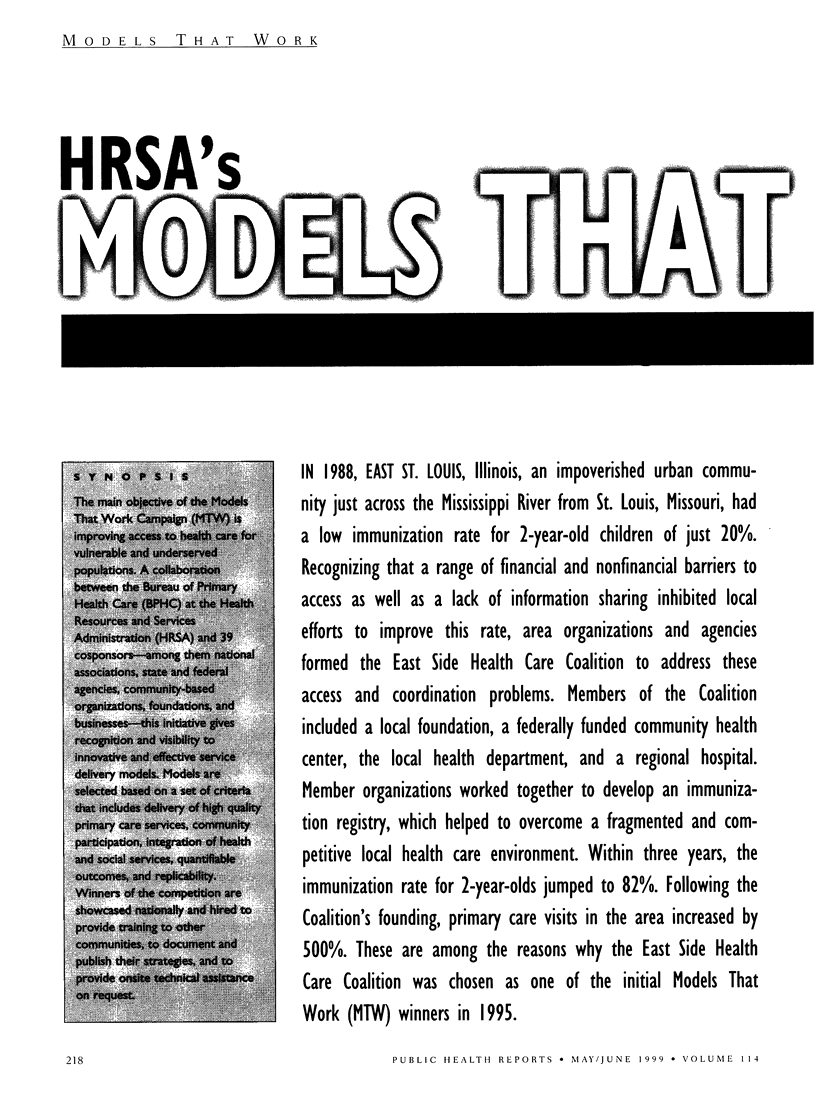
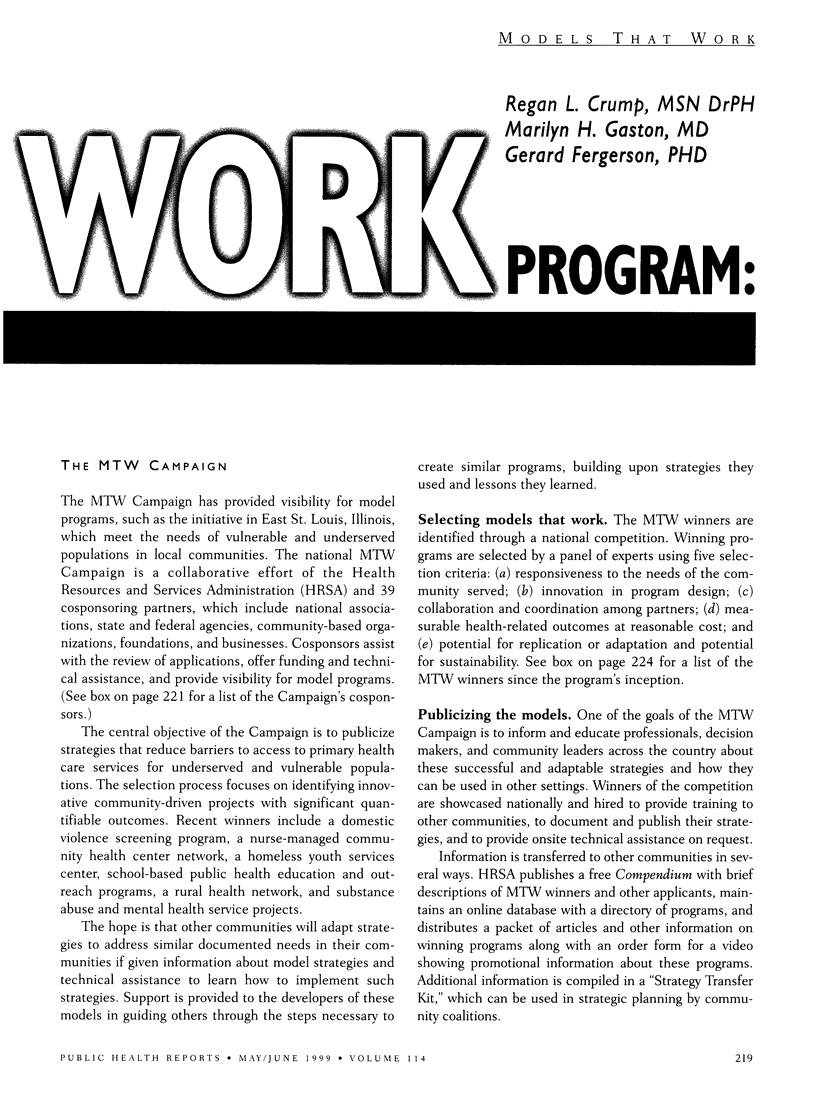
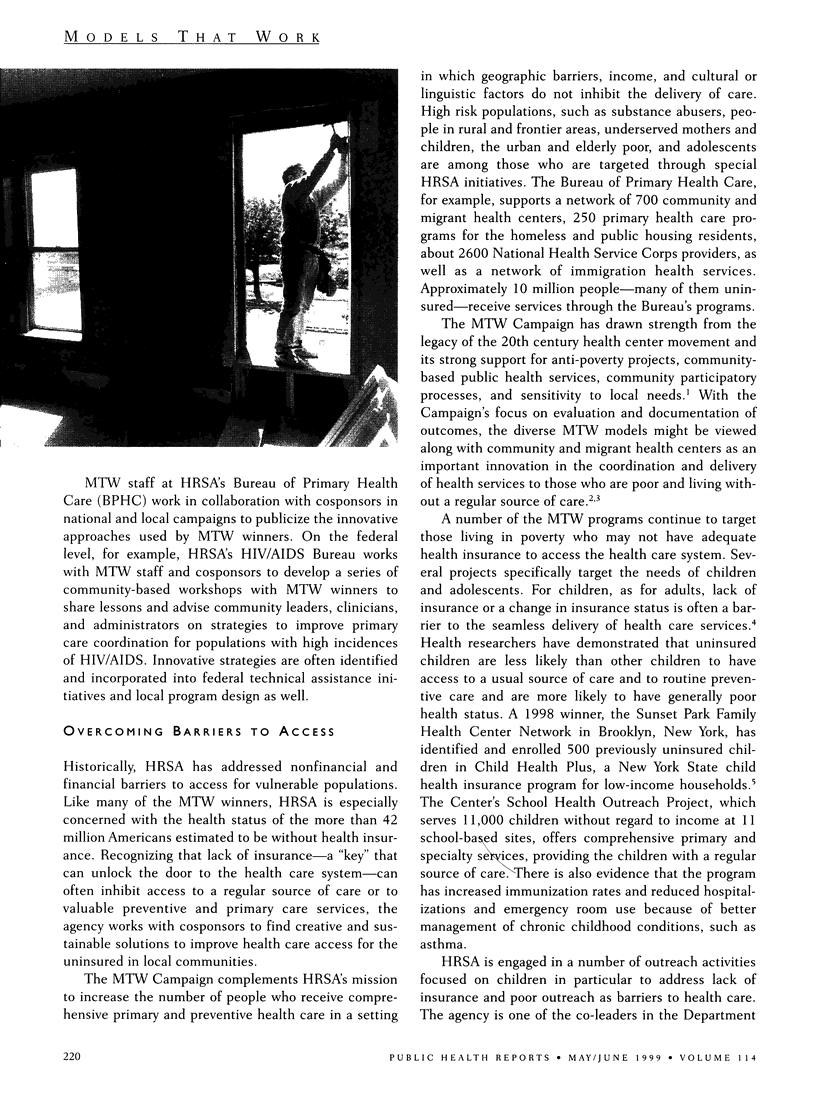
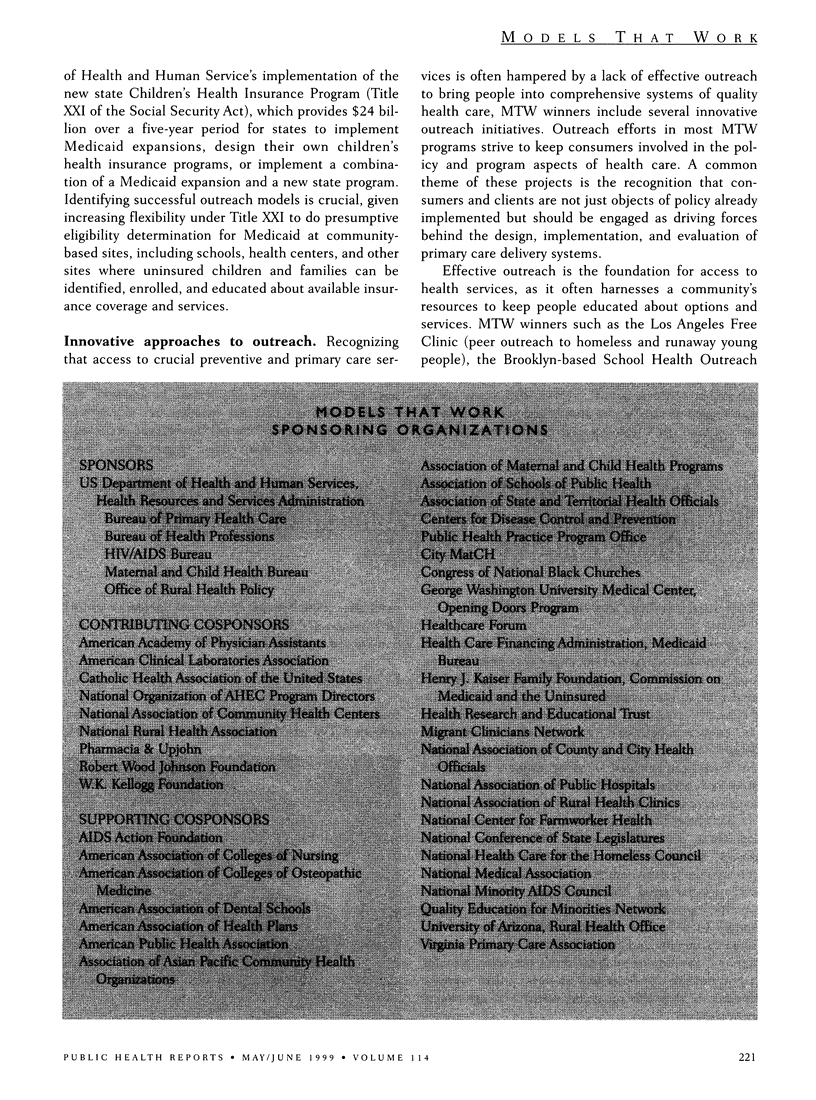
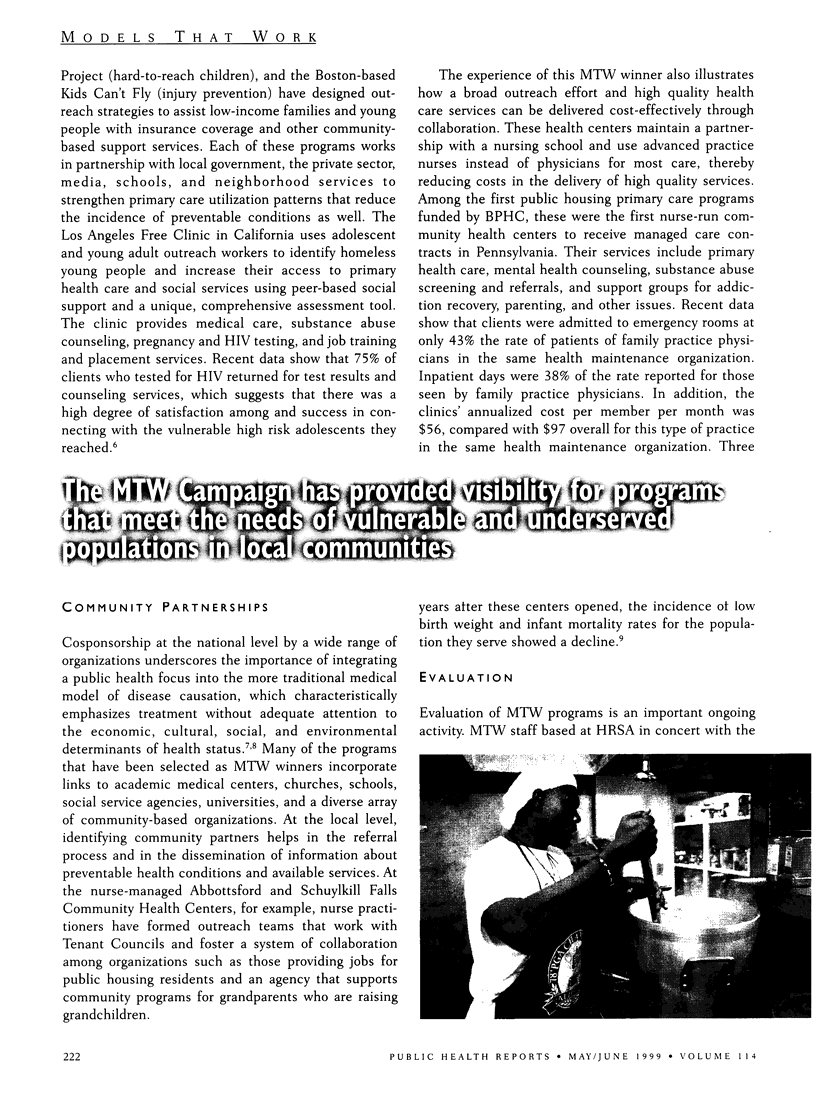
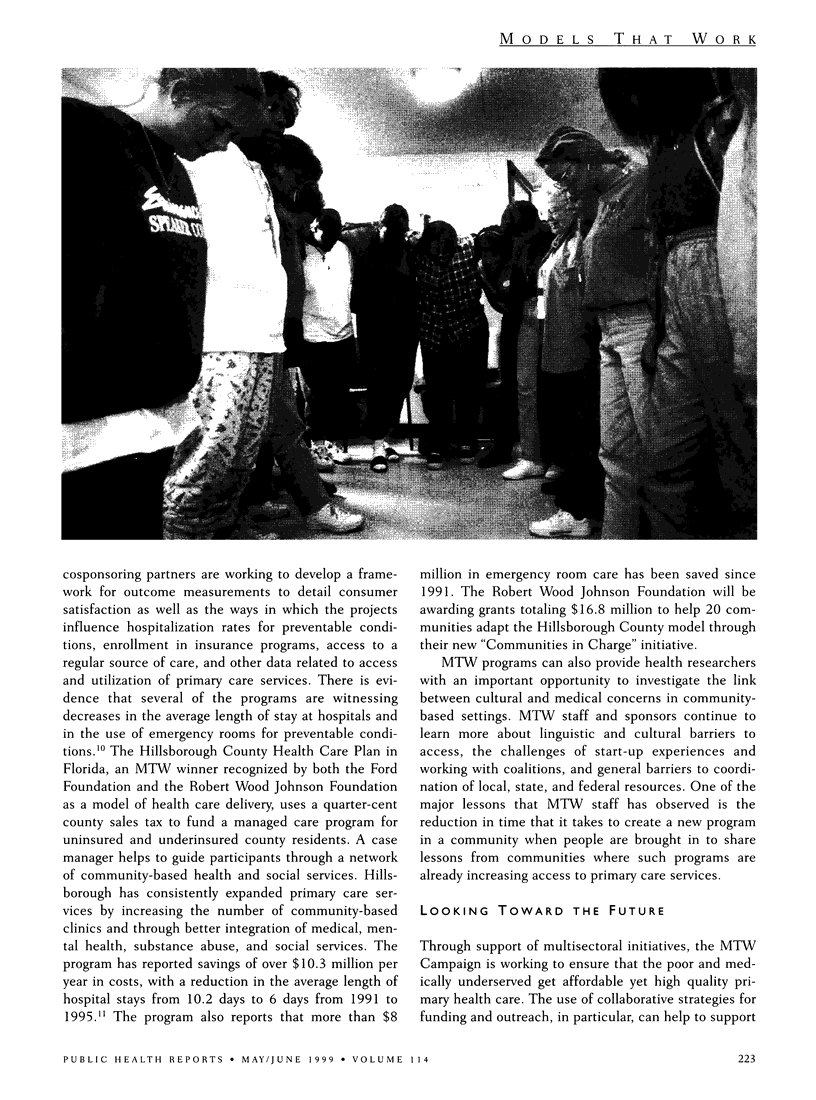
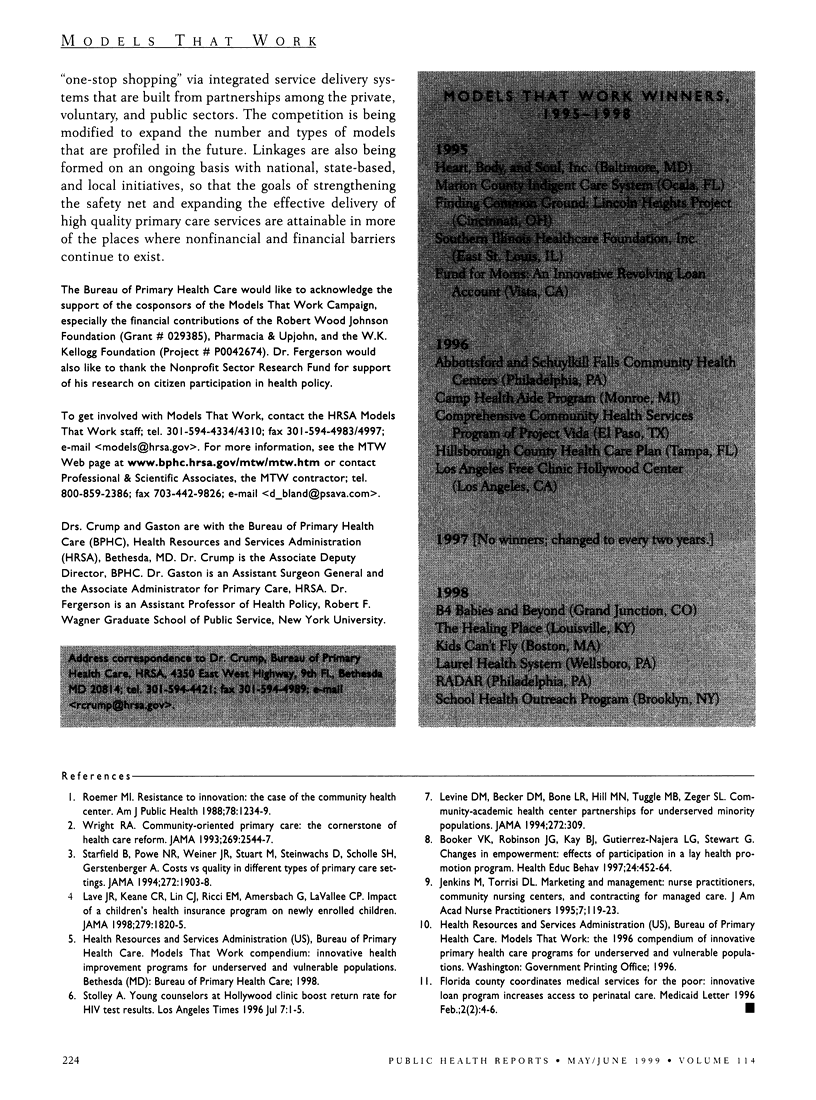
Images in this article
Selected References
These references are in PubMed. This may not be the complete list of references from this article.
- Booker V. K., Robinson J. G., Kay B. J., Najera L. G., Stewart G. Changes in empowerment: effects of participation in a lay health promotion program. Health Educ Behav. 1997 Aug;24(4):452–464. doi: 10.1177/109019819702400405. [DOI] [PubMed] [Google Scholar]
- Lave J. R., Keane C. R., Lin C. J., Ricci E. M., Amersbach G., LaVallee C. P. Impact of a children's health insurance program on newly enrolled children. JAMA. 1998 Jun 10;279(22):1820–1825. doi: 10.1001/jama.279.22.1820. [DOI] [PubMed] [Google Scholar]
- Levine D. M., Becker D. M., Bone L. R., Hill M. N., Tuggle M. B., 2nd, Zeger S. L. Community-academic health center partnerships for underserved minority populations. One solution to a national crisis. JAMA. 1994 Jul 27;272(4):309–311. [PubMed] [Google Scholar]
- Roemer M. I. Resistance to innovation: the case of the community health center. Am J Public Health. 1988 Sep;78(9):1234–1239. doi: 10.2105/ajph.78.9.1234. [DOI] [PMC free article] [PubMed] [Google Scholar]
- Starfield B., Powe N. R., Weiner J. R., Stuart M., Steinwachs D., Scholle S. H., Gerstenberger A. Costs vs quality in different types of primary care settings. JAMA. 1994 Dec 28;272(24):1903–1908. [PubMed] [Google Scholar]
- Wright R. A. Community-oriented primary care. The cornerstone of health care reform. JAMA. 1993 May 19;269(19):2544–2547. [PubMed] [Google Scholar]





